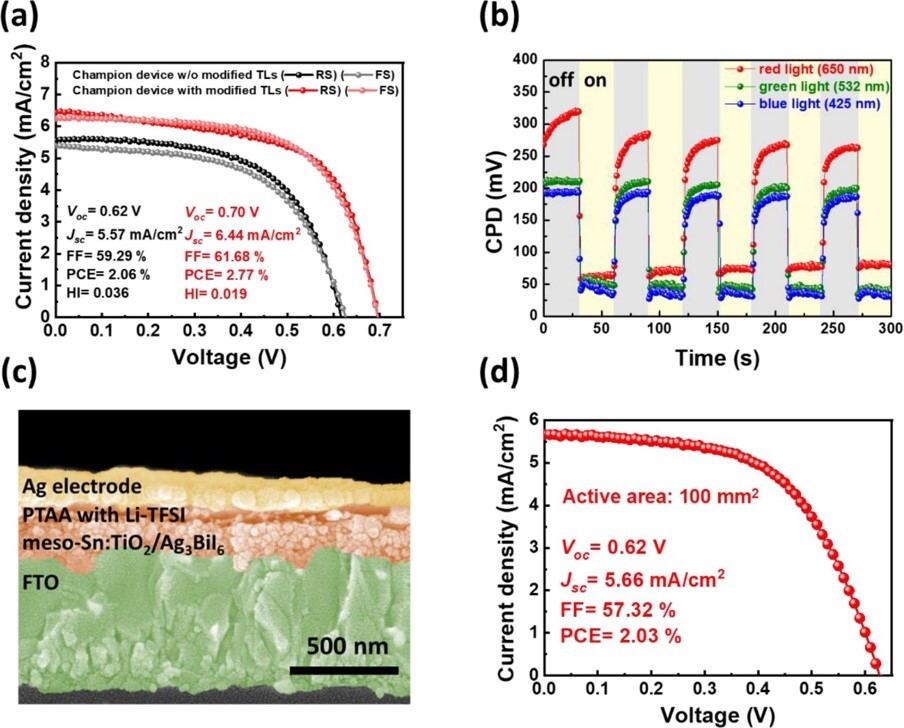

Doping engineering of carrier transporting layers for ambient-air-stable lead-free rudorffite solar cells prepared by thermal-assisted doctor blade coating

Chem. Eng. J. 451 (2023), 138807
Nowadays, high-efficiency perovskite solar cells mainly comprise a lead-based light-absorber layer. Without a doubt, the unprecedented power conversion efficiency (PCE) of perovskite solar cells makes them an optimistic solution for sustainable or renewable energy sources. However, the toxic composition of lead, a notorious element for organisms, in perovskite solar cells and its stability in an ambient environment raise public concern. Therefore, resolving these two issues is urgent for developing perovskite solar cells. In this study, Ag3BiI6 rudorffite was selected as an active layer prepared by the thermal-assisted doctor blade coating method to replace the conventional lead-based perovskite active layer. To align the energy level between carrier transporting layers and the Ag3BiI6 light absorber layer, doping both carrier transporting layers improved the PCE of doctor-bladed devices from 2.06% to 2.77%. These devices can maintain 90% of their initial PCE after storing them unencapsulated in an ambient environment for over 3,000 h. This study also demonstrates a large 1.00 cm2 device with a PCE of 2.03%. The lead-free, air-stable, and mass production processible properties make it a promising selection for photovoltaic materials.